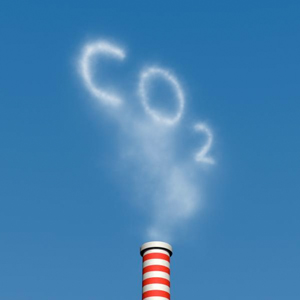 |
|
Please note: This summary is provided to help you understand the regulations. Consult the references provided for links to the full text of the regulations.
The regulatory framework for greenhouse gas (GHG) emissions is still being established, but the transportation sector is somewhat ahead of other sectors in the rulemaking process. This page provides information on new federal GHG emission standards that apply to road vehicles from the 2014 model year onward. There are currently no corresponding rules for rail, air, or water, however; similar GHG emission standards for these sources are likely to follow in coming years.
Who is covered by the regulations? The standards apply directly to engine, vehicle, and equipment manufacturers. Although the standards do not explicitly cover owners and operators of vehicles, they will affect them indirectly, since equipment purchased now will be in service during years when fuel costs and environmental regulations are likely to change significantly. What is the purpose of the regulations? Transportation accounts for a significant fraction - about 15% - of the total worldwide GHG emissions from all human activities, and that level is steadily growing. Among the transportation modes, road transportation is both the largest component (compared with rail, air, and water), and the component that is growing the fastest worldwide. In the U.S., transportation accounts for about 33% of all U.S. GHG emissions. GHG emissions regulations that apply to the transportation sector serve two purposes:
Improvements in fuel efficiency also serve both purposes. In addition to regulatory programs, EPA provides voluntary programs, such as SmartWay, to help industry make the most effective use of available technology and financing to improve fuel efficiency and reduce fuel costs. The TERC fuel efficiency page provides detailed information on the new federal fuel efficiency and greenhouse gas emission standards. Additional greenhouse gas rules may apply in some states. In California, any truck that enters the state must comply with rules established by the California Air Resources Board. Two of the rules apply specifically to trucks and buses:
An additional federal standard is currently being developed that will cover leakage from air conditioning units, since the refrigerants used in air conditioners are powerful greenhouse gases. For rail, future strategies for reducing emissions may include idle reduction equipment, auxiliary power units, hybrid engines, regenerative braking, and reduction of refrigerant leaks from rail cars. Compliance with the new heavy duty truck standards for greenhouse gas emissions will be largely the responsibility of vehicle and equipment manufacturers. Best GHG Reduction Practices for Road Transportation The proposed regulations are primarily directed toward manufacturers rather than operators, and are intended to improve the performance of future vehicles. But operators can also take steps to improve fuel efficiency and reduce GHG emissions from existing vehicles. Improvements in fuel efficiency automatically improve GHG emissions, since less fuel is burned to cover a given distance. Suggestions for improving fuel efficiency can be found on the TERC Fuel Efficiency topic page. A small but increasing proportion of medium and heavy-duty vehicles are being powered by alternative fuels such as natural gas and electric power. See the TERC alternative fuels page for more information on comparing the GHG emissions associated with several alternative fuels. In addition to equipment upgrades, operators can realize fuel economy and greenhouse gas emission reduction through operating practices. The EPA SmartWay program provides estimates of the cost savings and emissions reductions that can be realized through measures including:
U.S. EPA -- Office of Transportation and Air Quality Contacts. This contact list contains the names and telephone numbers of U.S. EPA employees who can answer your specific regulatory questions regarding transportation-related green house gases. Department of Energy (DoE) data on greenhouse gas emissions from transportation sector Fact Sheet on CARB's Tractor-Trailer Greenhouse Gas Regulation
|
 Greenhouse Gas Emissions
Greenhouse Gas Emissions